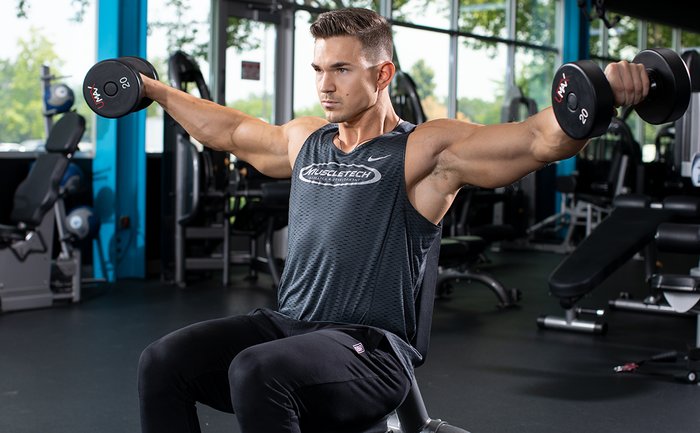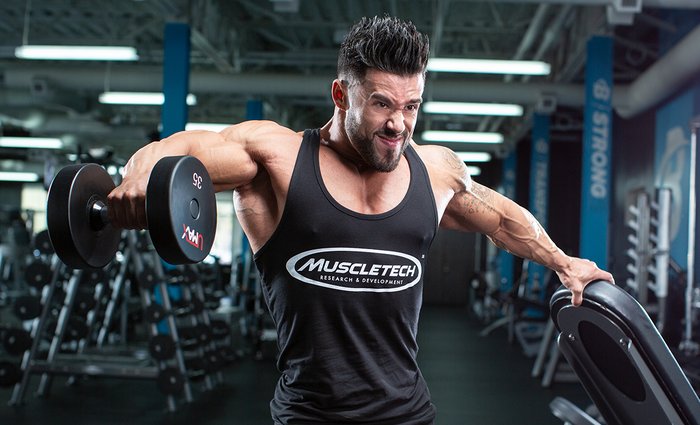Who doesn't want a killer V-taper? The key to any great taper is wide shoulders. The wider the shoulders, the more narrow the waist looks and the better your overall physique. To appear wider in the shoulders, you need to have round, full delts, and for that, lateral raises are often the best answer. Yet you can only do raises for so long before you hit a plateau, and eventually the same move won't be as effective.
But what if you could make new gains and shock your shoulders using that same tried-and-true shoulder-building exercise? It can be done by making one simple adjustment to this classic lift.
Take Your Laterals to the Side
Think about the word "lateral." What does it mean? To or from the side. Now think about when you perform the lateral raise. Most of you reading this likely start with the dumbbells in front of you before lifting them out to the side.

My recommendation is that you start performing the lateral raise with the weights at—wait for it—your side. Crazy concept, I know, but stick with me. There are several reasons why this subtle adjustment makes a huge difference.
Weight Where You Need It
Keeping the weights at your side the entire time means your side delts will be doing more work from start to finish. When you start with the dumbbells in front of you, your front delts can't resist instinctively joining the lifting party. This isn't necessarily bad, but if you want to round out those shoulders, then the side delts need to do the most work—and they need to do it alone, or nearly so.
Starting the movement with the weights at your sides means those side delts have no chance to relax, since the resistance is already where it needs to be. They'll stay activated even at rest, and they're already loaded when you go to lift the dumbbells back up for each rep.

Less Swinging
Another common bad habit on the lateral raise is putting a little swing into the motion near the end of a set. Some lifters even swing from start to finish so they can lift heavier and impress anyone who's watching.
Cheating the weight up occasionally is fine, but doing it every time is not. Not only does it diminish the amount of work done by the side delts, but it can also lead to an injury of your shoulder or back. Bringing the dumbbells back so they begin and end at your sides eliminates the temptation to swing. You may have to downshift to lighter weights, but the gains will be worth it.
Better Control
We've already covered how starting with the weights at your sides means you'll likely be doing more work with your side delts using less weight. This makes those reps you're about to put yourself through more easily controlled, translating to better results.

This one shoulder-building technique gives you greater control in the lifting portion of the movement. You'll be able to hold the weights at the top without going over shoulder-level, and you can finally defeat gravity and achieve that all-important slow descent to the bottom.
Try this tweak out for yourself next time you train shoulders. You're going to have to start at the lower end of the dumbbell rack, but eventually you'll get both bigger and stronger by implementing a little patience and proper execution.
Let us know how it works in the comments below.




